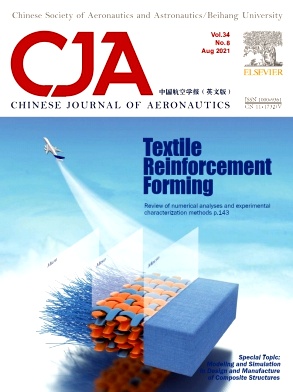Large-eddy simulation of shock-wave/turbulent boundary layer interaction with and without SparkJet control - ScienceDirect
摘要:
The efficiency and mechanism of an active control device "SparkJet" and its application in shock-induced separation control are studied using large-eddy simulation in this paper. The base flow is the interaction of an oblique shock-wave generated by 8° wedge and a spatially-developingMa=2.3 turbulent boundary layer. The Reynolds number based on the incoming flow property and the boundary layer displacement thickness at the impinging point without shock-wave is 20000. The detailed numerical approaches were presented. The inflow turbulence was generated using the digital filter method to avoid artificial temporal or streamwise periodicity. The numerical results including velocity profile, Reynolds stress profile, skin friction, and wall pressure were systematically validated against the available wind tunnel particle image velocimetry (PIV) measurements of the same flow condition. Further study on the control of flow separation due to the strong shock-viscous interaction using an active control actuator "SparkJet" was conducted. The single-pulsed characteristic of the device was obtained and compared with the experiment. Both instantaneous and time-averaged flow fields have shown that the jet flow issuing from the actuator cavity enhances the flow mixing inside the boundary layer, making the boundary layer more resistant to flow separation. Skin friction coefficient distribution shows that the separation bubble length is reduced by about 35% with control exerted.
展开
DOI:
10.1016/j.cja.2016.04.001
被引量:
年份:
2016
通过文献互助平台发起求助,成功后即可免费获取论文全文。
相似文献
参考文献
引证文献
辅助模式
引用
文献可以批量引用啦~
欢迎点我试用!



